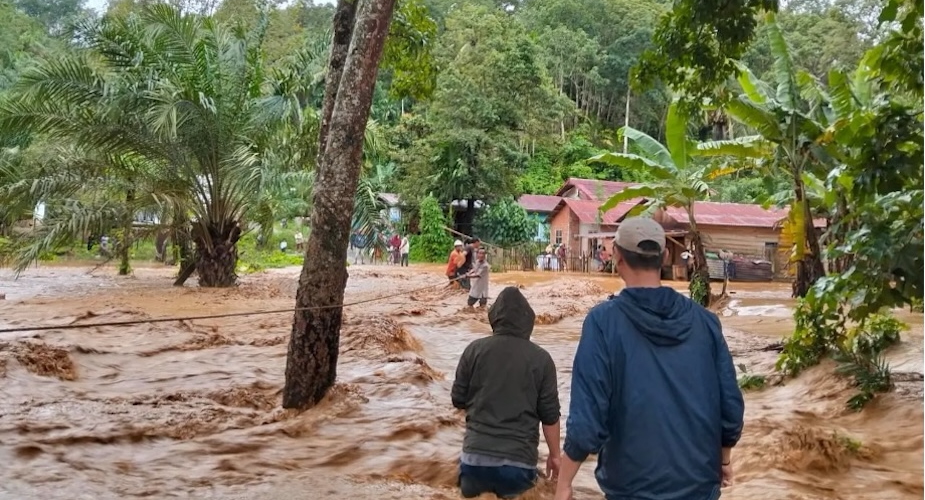Farmers illustrate their understanding of GM
Muhammad Riza
In Indonesia genetic modification (GM) remains shrouded in mystery. In 2001, experimental crops of genetically modified cotton were grown in South Sulawesi. The cotton seeds were transported from the airport in South Sulawesi by military trucks, heavily guarded by military police and bearing signs reading ‘warehouse rice’.
The 25 groups of farmers involved in the experiment were sorely disappointed with the poor yield they got from the crops. Cotton was grown on 640 hectares of land and was expected to yield four tons per hectare, but only two percent of the farmers achieved this target. What’s worse, government analysis of the test results show that local crops in that area were far superior to the GM cotton.
The farmers involved were not made aware of any negative impacts of GM on crops. With GM crops becoming more common throughout Indonesia, farmers should have the right to information that identifies both the benefits and the risks of GM farming, so they can make an informed choice about their involvement.
Learning about GM
A GM forum was recently run by a Solo NGO called Yayasan Duta Awam after GM was introduced to the areas of Grobogan and Surakarta in Central Java. Gadjah Mada University professor of molecular biology, Hari Hartiko, and Russel Cullinane from CUSO (a Canadian-based international development organisation) attended the program, together with farmers from villages in those areas.
Some NGOs are trying to overcome this problem. For example, a GM forum was structured to give farmers relevant information about GM. Through a series of workshops and information sessions farmers gained a practical understanding of GM, GM products, the impacts of GM and related aspects of Indonesian law.
Participants learned that GM is a sophisticated process. In one of the workshops, a group of farmers played the role of scientists, designing genetically modified products to suit their personal tastes. One of their hypothetical products was cassava that tasted of cheese, made by adding cow genes to cassava. Another was cotton that grew in other colours besides white.
Farmers’ perceptions
After two days of workshops and information sessions, farmers gained some understanding about GM. Their perceptions were reflected in the illustrations and posters they created during the forum.
One group produced a poster showing a farmer gazing intently at a group of footprints, which are pointing in all different directions. A large question mark symbolises the farmer’s confusion as he tries to work out which direction the footprints are heading. The farmer doesn’t know which way to go, to the right, left, forwards or backwards.
Another group produced a cartoon strip that tells the story of a farmer who wanted to get rich so he planted seed that was given to him free of charge by Monsanto, a multinational company that produces GM seeds. He worked hard for five years, but was disappointed with how the company treated him, the failure of his harvest, and the loss of soil fertility on his land. The cartoon story ends with the farmer in tears.
Another group likened the existence of GM to past government agricultural programs, such as the ‘green revolution’ program, the Farmers Credit Union (Koperasi Usaha Tani, KUT), and CF (Corporate Farming) among others. These programs promised to raise the living standard of farmers and make them more prosperous, but instead made their situations worse. The group produced a poster depicting a farmer knocked upside-down by a giant pointing hand bearing the letters RG (rekayasa genetika{ genetic modification). The name of the failed government programs — KUT and CF — appear on the farmer’s hat and shorts.
Some amusing ideas also came out of workshops as various groups of participants tried designing GM products to suit their farming needs. One group suggested modifying rice crops to resist mouse plagues. Their theory was that mice associate the smell of cats with danger. They designed a cat-smelling rice crop that would repel mice by mixing certain cat genes with rice plants to produce the smell of cats.
After taking part in the two-day forum participants were able to understand the realities of GM and, at the least, the need to be wary. Although the introduction of GM technology is attractive because of the demand for cheap food crops, its impact the environment, human health and society are not yet known. Like the confused farmer in the illustration, Indonesia’s farmers must be careful in deciding whether to accept or reject GM.
Muhammad Riza (riza@dutaawam.org) is an activist from Yayasan Duta Awam.











